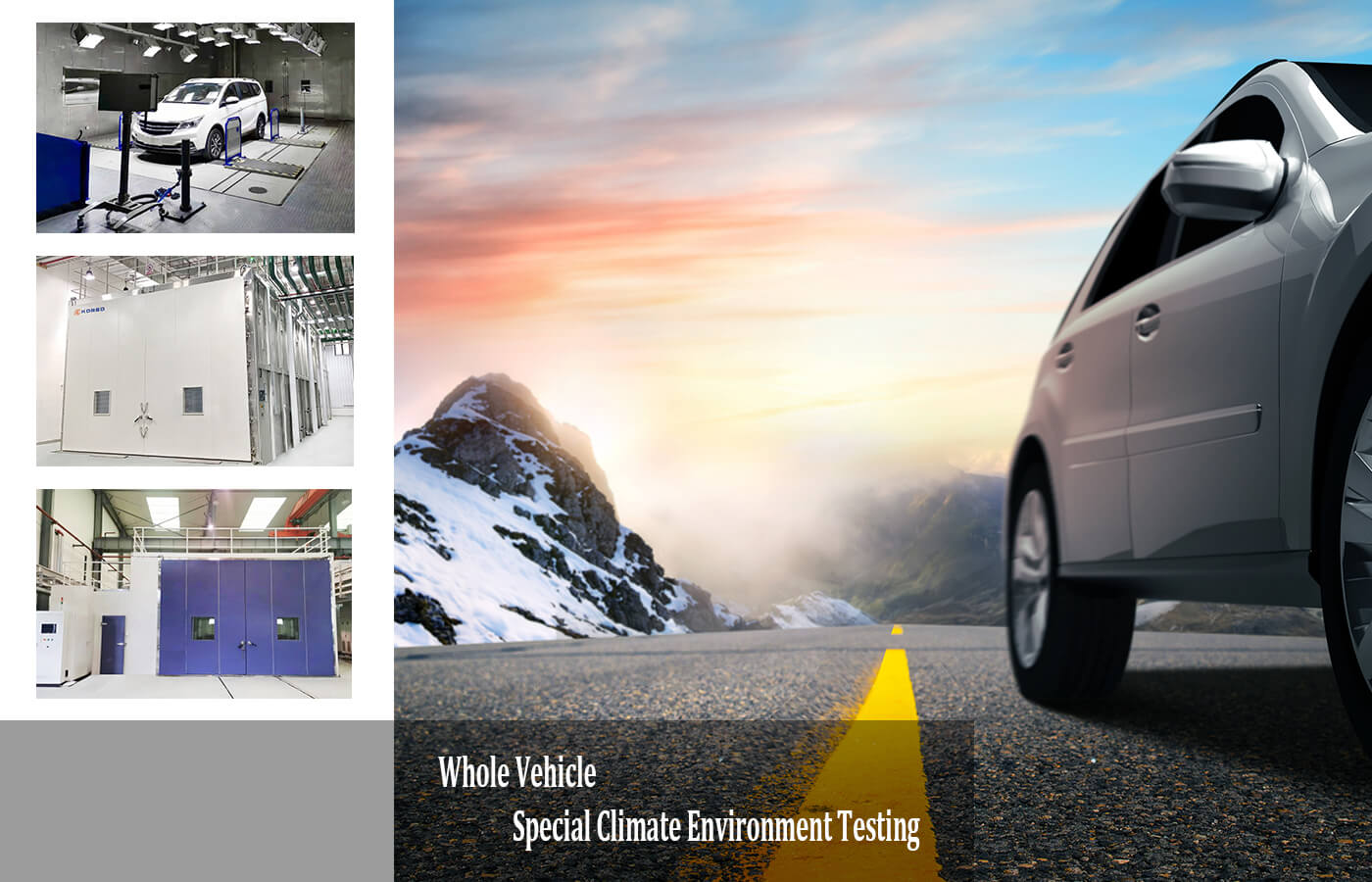Nowadays, there are many different types of cars with various functions available. However, regardless of how cars evolve, they always need to undergo environmental reliability testing. Different types of environments and terrains create diverse and complex weather conditions. The vehicle’s environmental reliability and adaptability test assesses the car’s ability to drive reliably in unique climates to guarantee the car can operate normally in all kinds of environments.
Special climate environments can be divided into the following four types:
Dry heat: an environment with strong sunlight, high temperature, low humidity and dryness.
Wet heat: an environment with high temperature, high humidity and high rainfall.
Plateau: an environment with low air pressure, low temperature, high altitude and little rainfall.
High cold: an environment with high latitude, high altitude, cold, dryness and low temperature all year round.
Common Automotive Environmental Reliability Failures
Dry heat
High water temperature, insufficient cooling system capacity
High temperature easily causes air blockage in the fuel supply system
Shortened battery life
High temperature and sunlight cause aging of non-metallic parts
Air conditioning cooling effect deteriorates
Electric vehicles take longer to charge
Wet heat
High water temperature, reduced cooling system capacity
Air blockage in the oil supply system
Poor air conditioning effect
High humidity environment causes corrosion of metal parts
Aging of non-metal parts
Plateau
Decreased vehicle power
Abnormal starting behavior
Reduced braking effectiveness
High Cold
Hardening of non-metallic parts, such as leather seats
Emulsification of engine oil
Low temperatures, making cold starts difficult
Poor braking stability
Ineffective defrosting
Extended charging time for electric vehicles
Short range for new energy vehicles
Reduced battery life
Special Climate Environment Test Items
Automobile Dry Hot Environment Test
High-temperature driving test for the whole vehicle
Air conditioning cooling test under high-temperature conditions
Engine high-temperature test
Light aging test
High-temperature endurance test
Battery high-temperature charging test
Software functionality test
Electrical system performance test at high temperatures
Automotive Hot and Humid Environment Testing
High-temperature driving test for the whole vehicle
Air conditioning cooling test under high-temperature conditions
Engine high-temperature test
Automobile corrosion resistance test (e.g., salt spray, rain)
High-temperature endurance test for vehicles
Battery high-temperature charging test
Automobile software functionality test
Electrical system performance test at high temperatures
Automotive Plateau Environment Testing
High-altitude reliability driving test (functions and components of various automobile parts)
Vehicle performance test under high-altitude conditions (brake system, cooling system, electrical system, driving stability, etc.)
Automotive High-Cold Environment Testing
Low-temperature adaptability driving test
Automobile starting performance test
Heating performance test
Defrosting performance test
Snow road test (passability and non-metallic material function tests)
Low-temperature cruising range test for automobiles
Battery low-temperature charging test
Automobile software functionality test
Automotive Environmental Testing Solutions
According to different test sites, vehicle environmental testing can be divided into bench testing and field testing. Generally, in the early stages of vehicle development, the reliability of the product is primarily verified through bench testing. Bench testing refers to various performance evaluations of the vehicle and its components conducted using a test bench in a laboratory environment. This environment can be created using a drive-in test chamber.
The following is a drive-in test chamber solution made by KOMEG for vehicle temperature and humidity testing:
Inner Dimensions:W4600mm*H4900mm*D6100mm
External Dimensions:W5900mm*H5300mm*D6600mm
Volume: 137m³
Temperature range: -40℃~+100℃
Humidity range: 20~98%R.H
Heating rate:-40℃~+85℃,average 3℃/min
Cooling rate:+20℃~-40℃,average 1℃/min
KOMEG provides various solutions for automotive environmental testing, such as temperature and humidity testing, salt spray testing, low air pressure testing, car road simulation testing, automotive wind tunnel testing… Welcome to contact us for customization.

